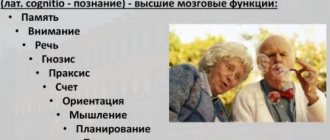Main symptoms:
- Depression
- Closedness
- Unnatural stretching of sounds
- Repeating individual sounds
- Repeating individual syllables
- Repeating individual phrases
- The emergence of phobias
- Interruption of speech
- Fear of speech
Stuttering is defined as a specific form of speech disorder in which prolongation (lengthening) or frequent repetition of syllables, sounds or words occurs. Stuttering, the symptoms of which can also be accompanied by hesitation in speech or frequent stops in it, causes a disruption in its rhythmic flow.
Online consultation on the disease “Stuttering”.
Ask a question to the specialists for free: Neurologist.
- Description of the disease
- Symptoms
- Treatment
Content
- 1 History 1.1 Treatment of the disease among the Aztecs
- 1.2 Psychological characteristics of people who stutter
- 1.3 Formation and development of approaches to overcoming stuttering
- 5.1 Causes
- 6.1 Conditions that favorably influence the speech of a stutterer
“About stuttering: prevention and overcoming the disease”
The book (it is in the labyrinth) is addressed to non-specialists ,
since the effectiveness of overcoming stuttering largely depends on them, and not only on teachers and parents, but also on the stutterers themselves. However, all these people, who are more interested in eliminating stuttering than anyone else, for the most part do not have the necessary understanding of stuttering itself, or the reasons for its occurrence, or ways to overcome it. This immeasurably complicates the achievement of positive results of speech therapy work, since both the stutterers themselves and the people around them most often unwittingly resist this due to their lack of the necessary knowledge. The main objective of this book is to fill this gap by conveying in a form accessible to non-specialists the information they need about stuttering, ways to overcome it and prevent it.
The book is intended for parents of children who stutter, for teachers of preschool and school institutions, and for stutterers themselves who have reached the appropriate age. It can also be recommended to speech therapists and students of defectology departments of pedagogical universities.
www.librero.ru
Story
Probably, stuttering appeared almost simultaneously with speech, because mentions of it have reached us since ancient times. People who stuttered: the Egyptian pharaohs, the Persian king Battus, possibly the prophet Moses (suffered from a certain speech impediment, according to descriptions similar to stuttering), the Roman poet Virgil, the philosopher and orator Demosthenes (the story of his stuttering was described by the Greek writer Plutarch (46-127 AD). BC) in the essay “Comparative Lives”)[4]. The ancient Greek historian Herodotus (484-425 BC) wrote about King Battus: “Speaks quickly, indistinctly, stumbles, does not finish words,” which is why stuttering in the West received the name “Battarism”[4].
Treatment of the disease among the Aztecs
In his fundamental work “General History of the Affairs of New Spain” (1576), Bernardino de Sahagún, based on information from the Aztecs about the treatment of various diseases, provided an explanation of the cause of stuttering, as well as a method of combating it:
Stuttering in children occurs due to the fact that when they are grown up, they suck milk |from their mothers|, and for |treatment| Therefore, it is advisable to wean them from the breast and force them to eat[5].
Psychological characteristics of people who stutter
Ancient scientists knew about the psychological characteristics of people who stutter, which is reflected in their works. But very few studies have addressed this issue, and much more attention has been paid to other aspects of stuttering. Ancient scientists, in their references to the psychological characteristics of stutterers, wrote about the use of mental precautions against stuttering (Plutarch) and about the character traits of stutterers (Avicenna)[6]. In the 19th century In the works of many scientists who study stuttering, there are references to the psychological characteristics of people who stutter. Scientists note the predominance of the mental sphere over others, speaking about the causes of stuttering, they note weakness of will, loss of spirit and embarrassment (Merkel), the predominance of a lack of will as the cause of stuttering (Wineken), the influence of mental disturbances on the state of stutterers and on stuttering itself (Becquerel, Otto , Bezel, Schrank, Dieffenbach, Blume, Colomba, Cohen, Lagusen). Summarizing these views and expressing his opinion, I. A. Sikorsky identifies such features of the psyche of people who stutter as:
- timidity and embarrassment in the presence of people;
- excessive impressionability;
- vividness of fantasies, which intensifies stuttering;
- relative weakness of will;
- various psychological tricks to eliminate or reduce stuttering;
- fear of speaking in front of certain people or in society.
Also of great importance in covering practical help for stutterers of that time is the case history of a stuttering boy, in which I. A. Sikorsky carefully and scientifically gives a psychological description of the patient, trying to differentiate his psychological characteristics and help the patient using them. This case history has not been cited in any of the known literary sources, although this case is an example of taking into account the psychological characteristics of people who stutter and an attempt to connect them with practical help to the patient. Many authors believe that such a thorough study of the psychological characteristics of people who stutter begins only in the 20th century. Speaking about the change and development of views on the psychological characteristics of stuttering scientists of antiquity in comparison with scientists of the 19th century, it is necessary to note that in the 19th century. a point of view has emerged about the predominance of the influence of the psychological aspect over all other aspects influencing stuttering. Also, scientists of the 19th century specified and generalized the psychological characteristics of people who stutter, this especially applies to the monograph by I. A. Sikorsky.
In the 20th century, the number of studies on the psychological characteristics of people who stutter increased significantly. Compared to past centuries, studies have begun to observe a clear division of people who stutter into age groups and, in connection with this, a differentiated approach to them. Scientists continued and clarified the point of view of past authors (I. A. Sikorsky) that stuttering most often manifests itself at an early age and the psychological characteristics of stutterers are also visible at an early age (V. A. Gilyarovsky). By the beginning of the 20th century, scientists came to understand that stuttering is a complex psychophysiological disorder (Libmann A. [7], Netkachev G. D., Frechels E. [8], Gilyarovsky V. A.). By the 30s of the 20th century and in the subsequent - 60s, the mechanism of stuttering and, accordingly, the psychological characteristics of people who stutter, many scientists in our country and foreign countries began to consider, relying on the teachings of I. P. Pavlov on higher nervous activity of man and, in in particular, about the mechanism of neurosis (Florenskaya Yu. A., Povarensky Yu. A., Gilyarovsky V. A., Khvattsev M. E., Tyapugin I. P., Lebedinsky M. S., Lyapidevsky S. S., Povarin A. I., Dinkin N. I., Kochergina V. S., Zeeman M. [9], Sovak M., Mitronovich-Modrzejewska A., Becker K-P.). In the 70s, psychiatry proposed clinical criteria for distinguishing between neurotic and neurosis-like forms of stuttering. Scientists began to consider the psychological characteristics of stutterers depending on the clinical forms of stuttering (Asatiani M.N., Drapkin B. Z., Kazakov V.G., Belyakova L.I.). Also by the end of the 20th century. Works have appeared that, from the point of view of not one science, but several sciences (psychology, pedagogy, medicine), carefully examine the psychological characteristics of people who stutter (Seliverstov V.I.[10], Shklovsky V.M.[11]). Works have also appeared devoted to specific issues of the psychological characteristics of people who stutter (Volkova G. A. [12], Zaitseva L. A.) The appearance of these works indicates a qualitative change in the approach to the study of the psychological characteristics of people who stutter, since these works have absorbed a lot of experience from past centuries , systematized it and, based on this, as well as on the basis of using information from various sciences, holistically presented what the psychological characteristics of stutterers are. It should be noted that work on specific issues of the psychological characteristics of people who stutter (features of behavior in games, characteristics of behavior in conflict situations, characteristics of mental activity, etc.) appeared only at the end of the 20th century.
Formation and development of approaches to overcoming stuttering
It can be assumed that the first information about psychocorrectional work is found in the history of the treatment of Demosthenes outlined by Plutarch. Demosthenes used the following methods and techniques for psychocorrection of his speech defect and his mental characteristics:
- recitation to the sound of sea waves;
- choosing a role model and imitating him both in speech and in facial expressions and gestures (Pericles);
- exercises in silent mental pronunciation of words (in a place remote from people).
In the 19th century, many scientists in their systems for treating stuttering (Itard, Lee, Colomba, Becquerel, Sherven, Blume, Otto, Merkel, Schulthess, Lagusen H., Koehn R.) did not separate mental treatment into a separate section and suggested using only certain techniques psychocorrectional influences, such as:
- personal influence by leaders (Colomba, Merkel, Lagusen X.[13]);
- diverting the patient's attention from defective speech (Colomba, Otto);
- the use of fiction to improve the mental state of people who stutter (Blume, Kyung R.[14]);
- construction of a speech utterance in mental terms even before motor reproduction (Bezel).
Of great importance for psychocorrectional work with stutterers in this period is the monograph by I. A. Sikorsky, in which mental treatment is highlighted in a separate section and proposed by I. A. Sikorsky as an integral part of an integrated approach to the treatment of stuttering. Sikorsky I.A. especially emphasizes the importance of mental treatment specifically for stuttering and clearly formulates a mental treatment plan. We do not find such a treatment plan in the literature from antiquity to the end of the 19th century. At the beginning of the 20th century, separate works appeared devoted specifically to the psychocorrectional effect on people who stutter (Netkachev G.D., Tartakovsky I.I.). In the works of Netkachev G. D.[15] and Tartakovsky I.I.[16] A qualitatively new look at psychocorrectional techniques and methods of influencing people who stutter has emerged. Netkachev G.D., unlike scientists of the past, rejects breathing exercises, which have invariably been included in many treatment systems for stutterers, saying that it has a bad effect on the mental state of stutterers, interfering with psychocorrectional work. Netkachev G.D. drew up a clear plan for psychocorrectional influence, which he called the “psychological method.” In Netkachev G.D. we find a plan for psychological assistance to families of children who stutter and to themselves. Such a plan was not previously in the works of scientists, although some advice was given in the monograph by I. A. Sikorsky. In the context of psychological assistance to children who stutter, the emerging works of V. A. Gilyarovsky are important[17].
Important and decisive in this period of time is the work of Tartakovsky I.I., in which he outlined a consistent and justified by practical experience, supported by the largest scientists of that time, system of psychotherapeutic work with people who stutter. This system caused great controversy in the 20s of the 20th century, which confirms its unusualness and revolutionary nature. The idea of Tartakovsky I.I. that stutterers should independently cope with their disorders - take treatment into their own hands and, at the same time, doctors, psychologists, teachers and other specialists will only advise them - has not been encountered in the history of the problem of stuttering from antiquity to the time when it was proposed by Tartakovsky I.I. Also, important, in our opinion, are the provisions of Tartakovsky I.I. on collective psychotherapy and on taking into account the individual characteristics of people who stutter. It should be noted that the system of Tartakovsky I.I., which appeared in the 20s, is organically connected with the time of its appearance. It was in the 20s. In all areas of science and culture, searches and experiments were carried out, many of which subsequently either completely disappeared or were preserved in a greatly altered form.
In the 1950-1960s, K. M. Dubrovsky proposed the “Method of instant relieving stuttering.” This is a purely psychotherapeutic method, which is an imperative suggestion in the waking state. Dubrovsky's method attracted such attention because at that time in the Soviet Union there were practically no real methods for effectively correcting stuttering. Moreover, those methods that were available did not include a psychological component, much less a therapeutic one.
In the second half of the 20th century, important changes took place in psychocorrectional work with people who stutter. Many scientists began to consider psychocorrectional work as a section of an integrated medical and pedagogical approach to overcoming stuttering (Lyapidevsky S.S., Lebedinsky V.S., Seliverstov V.I., Shklovsky V.M., etc.). Compared to the 19th century. and the beginning of the 20th century. Scientists began to clearly distinguish between methods and techniques of speech therapy and psychocorrectional work. There has been a clear division of methods and techniques of psychocorrectional influence according to different age groups of stutterers (Drapkin B. Z. [18], Volkova G. A., Belyakova L. I. [19], Dyakova E. A., Rau E. Yu. [ 20], Karpova N.L., Nekrasova Yu.B., etc.). During this period, there was a clear trend towards the importance of social rehabilitation of people who stutter as a priority task. In the past, many authors put first priority only on getting rid of stuttering as a speech defect. By the end of the century, a system of social rehabilitation for stutterers was developed (Nekrasova Yu. B., Karpova N. L.), which, based on a number of sciences (philosophy, psychology, pedagogy, medicine), develops the ideas of an integrated approach with the aim of integrative influence on the personality of a person who stutters in general. These approaches have deep historical roots. An integrated approach to working with people who stutter, taking into account the psychocorrectional direction, originates from the research of Sikorsky I.A., and the modern integrative approach to psychocorrectional work in psychology and pedagogy is based on the research of Rubinstein S.L., Vygotsky L.S., Luria A. . R.
The prospects for correctional work are associated with an individual-oriented approach to training and education, which is successfully used in modern systems of working with people who stutter, and there is a tendency to further develop and deepen this approach in working with people who stutter (Nekrasova Yu. B. [21], L. Z. Arutyunyan-Andronova[22], Karpova N.L.[23], S.B. Skoblikova[24], E.Yu. Rau, etc.).
How to explain to others that stuttering is not funny?
– Let's start with the fact that sometimes it really looks comical, especially when a person has never encountered this before.
Moreover, it forces cinema upon us. It is important to remember that when a person does not know how to react, most often he smiles. And this is not because he laughs at you, but because he himself is confused and does not know how to act.
If you don't like it when you talk and people around you smile, just tell them so. You will be surprised, but it works! As for bullying and ridicule at school, it is more complicated. Children are cruel and that's a fact. Don't show yourself defenseless and weak.
Protect yourself and your dignity. Don't be afraid to ask your parents, school counselor, or older friends for help.
Types of stuttering
Formally, it is customary to distinguish two forms of stuttering: tonic, in which there is a pause in speech, or some sound is prolonged, and clonic, characterized by the repetition of individual sounds, syllables or words[25]. There is also a mixed form of stuttering, in which both tonic and clonic convulsions are observed.
Another classification distinguishes between neurosis-like and neurotic forms of stuttering. The neurosis-like form of stuttering implies a pronounced neurological defect, in particular, impairment of motor skills in general and articulation in particular; Comorbidity with dysarthria is typical. In this case, neurotic reactions may occur, but the course of stuttering depends little on them. Children suffering from neurosis-like stuttering usually start speaking late and generally develop a little slower than their peers. Electroencephalography (EEG)[26] in most cases reveals pathological or borderline brain functioning.
In the neurotic form of stuttering, normal or early speech and motor development is typical. Stuttering initially occurs against a background of stress, both one-time (fear) and chronic. These children do not have pronounced neurological disorders; their EEG reflects more harmonious functioning of the brain than in the previous group. At the same time, the severity of stuttering extremely depends on the functional state: these people often speak almost clearly in a calm environment, but in case of stress (public speaking, conversation with a stranger, suddenly asked a question) they cannot say a word due to severe speech convulsions. There is also a strong severity of logophobia (fear of speaking) and avoidant behavior. In general, the condition of these patients meets the criteria for neurosis, therefore, the term “logoneurosis” is more often used for the neurotic form of stuttering, but some authors use it simply as a synonym for the word “stuttering”.
Is it true that stuttering can return after treatment?
Stuttering is not chickenpox. There is a hexagon (hexagon) of John Harrison's stutter. As long as the system consists of 6 elements (verbal behavior, emotions, perception, belief, intention and physiological response in balance), everything is fine.
As soon as any element sags, the structure collapses and speech deteriorates. And here it is important to understand what exactly is missing in order to recreate balance and harmony. I recommend reading D. Harrison’s book “Rethinking Stuttering.”
It is important to remember that anyone can start to stutter at a moment of grief, great stress, or intense emotions. But this will pass with the situation. A person will not stutter constantly.
Signs
Clonic stuttering is accompanied by interruptions in speech, which can be expressed in the repetition of individual sounds, syllables or entire phrases, in unnatural prolongations of sounds (with clonic stuttering, sounds and syllables are repeated, for example: “mm-mm-mm-mm-mm -m-m-ball”, “pa-pa-pa-pa-pa-locomotive”, with the tonic form of stuttering, pauses in speech often occur, for example: “m...ball”, “auto...bus”).
Stuttering is almost always accompanied by tension, anxiety and fear of speaking.
In this case, unnatural movements, facial grimaces or tics are possible, with the help of which a stuttering person tries to overcome his stuttering.
Often, when stuttering, various kinds of phobias are observed, for example, social phobia associated with fear of speech. There may be cases of social isolation.
Stuttering in adults and children, its forms
Stuttering is a violation of the tempo-rhythmic organization of speech. Logoneurosis mainly occurs in children, as well as adults. How to cure stuttering, and what are the symptoms of the disease? The main symptoms or signs of stuttering begin to appear in children before the age of 12, and are accompanied by clonic-tonic convulsions. Boys begin to stutter more often.
Many scientists have devoted themselves to studying what stuttering is, whether stuttering can be treated or not, and how to deal with stuttering? For the first time, the complete symptoms of stuttering were collected in the publication of I.A. Sikorsky. From the point of view of scientists, the causes of stuttering are divided into two groups: predisposing and producing.
What belongs to the predisposing group:
- neuropathic burden of parents (infectious, somatic and nervous diseases);
- neuropathic personality of the stutterer (nightmares, tension, irritability);
- brain damage.
- clonic - repetition of only one word;
- tonic, when a person repeatedly repeats the same words.
- the first thing the technique begins with is developing fine motor skills of the hands;
- muscle tone relaxes;
- motor and speech coordination develops;
- and the last stage - a sense of tempo and rhythm develops.
- Preparatory (the child is created in a completely calm and limited communication environment, in other words, a silent regime when stuttering).
- Training (at this stage the child is smoothly transferred from quiet and calm speech to loud and clear, from calm games to emotional ones). The peculiarity is that during the training, not only children, but also their parents are involved in the classes. At this stage, it is necessary to make sure that the child stops being afraid of communication.
- Consolidating (the last stage is designed to model smooth speech, which turns into a long story and reading). This will help you learn how to get rid of stuttering.
- the first stage of eliminating stuttering is a complete examination of the patient, which will make it possible to establish the true cause of the disease;
- stage two - habitual manners are “broken” due to sessions with a psychotherapist;
- the third stage is speech training in everyday life and relapse prevention.
- The first stage is the “Palms” exercise. Stand straight, bend your elbows (elbows down), and your hands in front of you ("psychic" pose). In this position, you need to take noisy, rhythmic, short breaths through the nose, while clenching your hands into fists, supposedly grasping movements. Without pausing, take 4 breaths, then lower your arms and rest for 4-5 seconds, then take 4 breaths again. You need to take 4 breaths 24 times. You may feel dizzy at the beginning of the exercise. It’s okay, sit down and rest, thereby increasing your pause to 10 seconds.
- Exercise "Pagons". Starting position – standing. Press your hands to your stomach at waist level and clench them into fists. As you inhale, sharply push your hands down towards the floor. The shoulders should remain relaxed and the arms should be fully straightened. Then return to the starting position and take 8 breaths in a row. Ideally, this exercise should be performed 12 times 8 times.
- Exercise “Pump” (inflating a tire). The starting position of this exercise is standing. Place your feet shoulder-width apart. Make a slight bend, hands down, supposedly reaching for the floor, but don’t touch it. During the second tilt, you need to take a noisy and short breath through your nose, ending the inhalation along with the tilt. Then return to the starting position again and do this exercise 12 times.
- the program synchronizes speech and the human auditory center;
- a stuttering person speaks into a microphone, and the program adapts to him. This automatically produces a delay of a few milliseconds;
- “Speech Corrector” was created so that the tasks of correctional work can alleviate the condition during the life of a stutterer.
- Point one is located on the inside of the arm between the wrist and the tendon. You need to hold your hands palm up and massage the points one at a time.
- Point two is located on the inside of the forearm slightly above the middle part of the wrist. It is massaged in the same way as point one.
- Point three is located on the outside of the shoulder 1 cun (1/30 meter) above the fold of the unbent elbow. The patient should sit and lower his arms. This point is massaged in the same way as the previous two.
The causes of logoneurosis include the following psychosocial problems: improper upbringing of a child, mental trauma, prolonged conflict with adults, improper speech formation in childhood.
The patient has conjugate speech when stuttering. There are 7 levels of speech underdevelopment. What level of general speech underdevelopment (GSD) does stuttering belong to? The answer is obvious - to the fourth.
There are also the following forms of defect:
The tonic classification is distinguished by the fact that the stutterer makes long pauses before speaking and during sentences. Sometimes he chooses silent mode altogether.
It is sometimes difficult to say which stutter is worse - tonic or clonic. Only a doctor can make the correct diagnosis. After the diagnosis, the psychotherapist can help restore the tempo-rhythm-intonation side of speech when stuttering.
Treatment methods for stuttering. Speech therapy classes and original methods
Doctors have long ago fully studied and selected the most effective methods for examining stuttering, so eliminating stuttering has become very simple. Thanks to modern technologies, methods for examining stuttering are in wide demand.
Speech therapy classes are conducted by doctors, as a rule, with a group of children who have such speech characteristics. It is worth noting that the diagnosis of stuttering plays an important role in treatment. So, stuttering - what is it? Who treats and how to remove stuttering?
First place is occupied by methods for treating stuttering from doctor Smirnova. The specificity is that the speech therapist conducts daily play-based classes lasting 20 minutes, preferably in the morning. Advantages of Smirnova’s technique:
The method of doctor Silivestrov is also considered one of the best. This technique is used for various speech disorders and is designed for three stages, lasting 3-4 months and 32-36 sessions. What stages are included in this technique:
Important! The above methods are suitable for preschool children
Shklovsky's technique. This technique will take three months. In this case, the person who stutters must be in a hospital. Which doctor treats stuttering in a hospital? This is the prerogative of a psychotherapist, neurologist and psychiatrist. The technique itself includes three stages:
Don’t forget about Harutyunyan’s methods. The patient must remain in the hospital for the first 24 days from the start of treatment. A unique feature of treatment using the Harutyunyan method is the synchronization of speech with the dominant hand. Due to this, the patient develops a new psychological state when the patient’s speech is associated with calmness, confidence, correct facial expressions and intonation. Is it possible to cure and overcome stuttering using this technique? - it’s definitely possible!
Breathing exercises by A. N. Strelnikova
Alexandra Nikolaevna Strelnikova has developed a breathing technique that will help solve many problems. How exactly to correct pathological stuttering and abandon the silent mode? It is worth noting that this gymnastics can be practiced not only by children, but also by adults. It will take them much more time and effort, but in this case it is quite possible to overcome both the tonic and clonic forms of the disease:
There are 10 exercises in total. This technique is also used to prevent stuttering.
Computer method for stuttering treatment
Thanks to modern technology, we can learn how to get rid of stuttering once and for all. To do this, there are many computer programs that will help get rid of stuttering. For example, the computer program “Speech corrector” and correction methods:
The developers are confident that there is simply no better method for treating stuttering than the one presented. After all, the program eliminates speech defects by 70-80%. Treatment is carried out at different ages, even if it is severe stuttering in an adult. With a long period of practice, it is possible to completely solve a problem, such as getting rid of stuttering, in other words, the person is cured.
Acupressure and hypnosis treatment
One of the ways to eliminate the disease is hypnosis. As a rule, this procedure is carried out in a group of 6-8 people, and in the presence of close people. During the session, correctional work for stuttering begins with the person using suggestion to relieve the spasm from the face and the feeling of fear of speaking. Hypnosis does not treat the actual causes of the defect; hypnosis only helps a person not to lose already corrected speech.
There are also methods for treating stuttering, such as acupressure. As for acupressure, it does not solve the problem of how to deal with stuttering completely. This method only alleviates the general condition of a person, the so-called correction of stuttering. But it can only be carried out by a highly specialized doctor who treats stuttering.
Important massage points include the following:
There are ten points that have different definitions and purposes. All of them are quite capable of correcting a speech defect.
Causes
Causes
The causes of stuttering have not been precisely established. It is assumed that the occurrence of stuttering is determined by a combination of genetic and neurological factors. In any case, stuttering is accompanied by an increase in tone and the emergence of convulsive readiness of motor (motor) nerve speech centers, including Broca's center. There is also a well-founded opinion that stuttering occurs as a result of fear at an early age in children. So, for example, many people who stutter claim that the speech defect appeared at an early age as a result of severe fright. In adults, stuttering may appear as a result of concussion; such stuttering may go away over time. Any deviation from the normative development of speech can lead to stuttering: early speech development with rapid accumulation of vocabulary; or, conversely, delayed psycho-speech development, alalia, general underdevelopment of speech, characterized by a low amount of knowledge and ideas about the world, a small vocabulary; erased form of dysarthria, dyslalia, rhinolalia. The emergence and consolidation of stuttering in children is facilitated by pathological upbringing, disruption of family roles and the functionality of the family as a whole, as well as the characterological traits of parents of stutterers[28]. Stuttering can occur in children as a result of imitating a parent who stutters. Stuttering often occurs after infectious diseases and can be a concomitant diagnosis for diseases of the central nervous system, most often cerebral palsy (CP).
In 2020, scientists found that adults who stutter have reduced regional cerebral blood flow in the superior frontal gyrus and Broca's area, which is responsible for pronouncing words [29] [30].
Mechanism
Stuttering is caused by spasms of the speech apparatus: the tongue, palate, lips or muscles of the larynx. All except the last one are articulatory spasms, spasms of the muscles of the larynx - vocal (hence the name “stuttering” - the spasms resemble hiccups). There are also respiratory spasms, in which breathing is impaired and there is a feeling of lack of air. The mechanism of occurrence of spasms is associated with the spread of excess excitation from the motor speech centers of the brain to neighboring structures, including adjacent motor centers of the cortex and centers responsible for emotions.
What are the psychological and psycholinguistic aspects?
The mechanisms of stuttering are being actively studied from a linguistic point of view in order to accurately determine the moment of spasm of the muscles of the speech apparatus.
Speech communication is divided into the following stages:
- The desire to convey information, supported by emotions and volitional effort.
- The appearance of an idea in the form of silent speech, that is, the process of thinking.
- Play using sounds.
In “Mechanisms of Communicative Speech” I. Abelev concluded that convulsions begin when the speaker has formed an intention and a certain program, but the three-phase scheme is supplemented by one more point - the stage of readiness to speak .
At this moment, the stutterer experiences a failure of the following systems:
- energy;
- generator;
- resonator
The consequence is convulsive muscle contraction, manifested by stuttering at the last stage.
In general, the psycholinguistic and psychological (psychosomatics of stuttering) mechanisms of the onset of the disease in adults and children differ. Common explanations:
- neurosis as a consequence of a fixed involuntary reaction, which initially appeared due to problems in pronouncing words of various origins;
- disorder of speech functions, provoked by speech dysontogenesis and disturbances in the process of personality formation;
- a neuropsychiatric disorder that arises due to a failure of processes in the cerebral cortex, a disruption of the connection between the cortex and the subcortex, and a failure of the uniform rate of breathing, articulation and voice.
Factors for improving/deteriorating speech
These factors vary depending on the type of stuttering, but there are some “rules” that “work” in most cases.
Conditions that favorably influence the speech of a stutterer
I. A. Sikorsky in his monograph “On Stuttering” recommended “slow speech, pronounced in a low voice and monotonous tone” as a factor that reduces stuttering.
Conditions that adversely affect the speech of a person who stutters
If stuttering is a neurosis, it intensifies when a person becomes nervous, as well as generally with strong emotions.
Children at risk for stuttering
| This section is missing references to information sources. Information must be verifiable, otherwise it may be questioned and deleted. You may edit this article to include links to authoritative sources. This mark was set on May 4, 2020 . |
- children who suffered from spasmophilia
. Such children have increased seizure activity; - children with anxious character traits or observing conflict situations in the family;
- children with speech development delay ( SRD
),
alalia
or
dysarthria
aged 3-6 years; - children with early accelerated speech development, when demands are made that are beyond the child’s strength and information overload occurs;
- children who are surrounded by people who stutter;
- children with bilingualism: early learning of two or more languages provokes a decrease in the adaptive capabilities of the central nervous system;
- socially deprived children who spend most of their time at the computer and TV, as this is a source of information overload of the nervous system.
How many people stutter?
– According to one study, approximately every hundred people stutter to a greater or lesser extent. And this is approximately 75 million people on planet Earth!
Some stuttered in childhood, while others do not admit to themselves this feature.
By the way, for a logoneurotic person, hiding from oneself and society is a normal topic. For a very long time I myself did not recognize myself as a stutterer and considered this term offensive.
By the way, stuttering occurs more often in guys, and girls stutter less often. And, as a rule, these girls have more masculine character traits.
This is from my own observations, which I associate with differences in the activity of the brain hemispheres of different sexes. Although there is no exact data, as well as full-scale studies.
Treatment methods
Treatment of stuttering in any case has a direct or indirect effect on speech function, leading to an improvement in the condition as a result of the body’s compensatory reaction to one or another type of corrective action. Due to the fact that stuttering has pronounced functional, personal and social aspects, its treatment necessarily contains therapeutic, pedagogical and rehabilitation components. At the same time, the significance and effectiveness of the pedagogical and rehabilitation components depend on the patient’s individual abilities to perceive correction. Therefore, treatment of stuttering is a complex and controversial process, which does not always depend on the quality of the method used.
There are a number of ways to cure stuttering, but, unfortunately, none of them is 100% guaranteed. All methods [ source not specified 3296 days
] are one way or another divided into those who consider stuttering as a speech defect and as a logoneurosis.
The first ones advise “speaking smoothly” or somehow normalizing speech
.
The second concentrate on the nervous system
, considering stuttering only one of the manifestations of neuroticism. There are a great variety of methods for treating stuttering (see links), but there is no single “correct” one.
All stuttering treatment methods are divided into types of methodological approach and types of therapeutic influence. In general they can be divided into:
- Speech therapy
- Psychological
- Psychotherapeutic
- Logopsychotherapeutic
- Socio-rehabilitation
- Medication
- Physiotherapeutic
- Complex
- Non-traditional.
The therapeutic organization of stuttering treatment methods can be: outpatient, inpatient, family, group and individual.
Some authors of stuttering correction systems: Nekrasova Yu. B., Dubrovsky K. M., Gromyko V. M..
Unfavorable conditions conducive to the development of logoneurosis in children
Let's figure out why stuttering occurs in boys and girls, what causes the problem, and what causes its development.
Unfavorable conditions that increase the likelihood of stuttering include the following:
- Rapid development of speech functions at 3-4 years of age due to constant communication with older relatives.
A child may have a problem with speech iteration (repetition of words, sounds), dictated by physiological reasons. - Specific properties of the child’s psyche that naturally change with age.
The process of formation of the left and right hemispheres ends at the age of five, during the same period the distribution of mental functions between the hemispheres comes to an end.Speech, as the highest mental function, matures the slowest and is characterized by increased sensitivity. Moreover, in males the process is even slower, which leads to instability of their central nervous system.
- Physical weakness of the child.
- Poorly developed motor functions, articulatory movements, disturbances in the perception of rhythm,
- psychological constraint, which manifests itself in an extremely acute reaction to any irritant. The reason is conflictual relationships with the environment, the inability to understand and accept the requirements of the environment.
- Lack of positive, child-pleasing communication with adults. The consequence is emotional stress, leading to psychogenic stuttering.
The appearance of a strong irritant, if the child is in the high-risk category due to unfavorable conditions, will provoke a nervous disorder and speech defect.
Notes
- Speech therapy: A textbook for students of defectology faculties of pedagogical higher educational institutions / Ed. L. S. Volkova, S. N. Shakhovskaya. - Humanitarian. ed. VLADOS center, 2002. - 680 p.
- Zhmurov V. A.
Psychiatry. Encyclopedia. - T/O "Neformat", 2020. - P. 287. - American Psychiatric Association.
Highlights of Changes from DSM-IV-TR to DSM-5 (English). American Psychiatric Publishing (2013). - ↑ 1 2 3 4 Yu. A. Fasenko, M. I. Lokhov.
Stuttering: history and review of the current state of the problem. Bulletin of St. Petersburg University. Episode 11. Medicine (2015). Retrieved January 7, 2020. - Sahagun, 2013, p. 37.
- Sikorsky I.A.. About stuttering. - St. Petersburg: Publishing house of Karl Ricker, 1889.
- Liebmann A. Pathology and therapy of stuttering and tongue-tiedness // Reader on speech therapy (extracts and texts): Textbook for students of higher and secondary special pedagogical educational institutions: In 2 vols., T. 1, section 5 / Ed. Volkova L. S. and Seliverstova V. I. - M.: VLADOS, 1997.
- Freshels E. Stuttering. Associative aphasia // Reader on speech therapy (extracts and texts): Textbook for students of higher and secondary special pedagogical educational institutions: In 2 volumes, T.1, section 5 / Ed. Volkova L. S. and Seliverstova V. I. - M.: VLADOS, 1997.
- 3eeman M. Children who stutter // Reader on speech therapy (extracts and texts): Textbook for students of higher and secondary special pedagogical educational institutions: In 2 volumes. T. 1, section 5 / Ed. Volkova L. S. and Seliverstova V. I., M.: VLADOS, 1997.
- Seliverstov V.I. Stuttering in children. - M.: VLADOS, 1994.
- Shklovsky V.M. Features of stuttering in neuropsychiatric diseases // Reader. Speech therapy. Stuttering. Section 2/Compiled by: Belyakova L.I., Dyakova E.A.—M.: Eksmo-press, 2001.
- Volkova G. A. Features of the behavior of children who stutter in conflict situations // Theory and practice of correctional education for preschoolers with speech impairments: Interuniversity collection of scientific papers / Responsible. ed. Belyakova L. I. - M.: Prometheus, 1991.
- Laguzen X. Method of curing stuttering // Reader on speech therapy (extracts and texts): Textbook for students of higher and secondary special pedagogical educational institutions. In 2 vols., T. 1, section 5 / Ed. Volkova L. S. and Seliverstova V. I. - M.: VLADOS, 1997.
- Kyon R. Stuttering. // Reader on speech therapy (extracts and texts): Textbook for students of higher and secondary special pedagogical educational institutions: In 2 volumes, T. 1, section 5 / Ed. Volkova L. S. and Seliverstova V. I. - M.: VLADOS, 1997.
- Netkachev G. D. Stuttering // Reader on speech therapy (extracts and texts): Textbook for students of higher and secondary special pedagogical educational institutions: In 2 volumes, T. 1, section 5 / Ed. Volkova L. S. and Seliverstova V. I. - M.: VLADOS, 1997.
- Tartakovsky I. I. Psychology of stuttering and collective psychotherapy // Reader on speech therapy (extracts and texts): Textbook for students of higher and secondary special pedagogical educational institutions: In 2 volumes, T. 1, section 5 / Ed. Volkova L. S. and Seliverstova V. I. - M.: VLADOS, 1997.
- Gilyarovsky V. A. On the issue of the genesis of stuttering in young children and its role for the overall development of personality and its treatment // Reader on speech therapy (extracts and texts): Textbook for students of higher and secondary special pedagogical educational institutions: In 2 vols. , T. 1, section 5 / Ed. Volkova L. S. and Seliverstova V. I. - M.: VLADOS, 1997.
- Drapkin B.Z. Psychotherapy in the complex treatment of stuttering in adolescents // Reader. Speech therapy. Stuttering. Section 6. / Compiled by: Belyakova L. I., Dyakova E. A. - M.: Eksmo-Press, 2001.
- Belyakova L. I., Dyakova E. A. Stuttering. A textbook for students of pedagogical institutes specializing in speech therapy. - M.: Eksmo-Press, 1998.
- Pay E. Yu. The role of play psychotherapy in eliminating stuttering in preschool children // Psychotherapy in defectology: A book for speech therapists / Compiled by: Weisman N. P. - M.: Prosveshchenie, 1992.
- Nekrasova. Yu. B. Bibliotherapy at the preparatory stage of social rehabilitation of stutterers // Psychotherapy in defectology: A book for teachers / Compilation: N. P. Wiseman - M.: Prosveshchenie, 1992.
- Harutyunyan L.Z. Basic provisions of a comprehensive methodology for sustainable normalization of speech for stuttering // Reader. Speech therapy. Stuttering. Section 5 / Compiled by: Belyakova L. I., Dyakova E. A. - M.: Eksmo-Press, 2001.
- Karpova N. L. Fundamentals of personality-oriented logopsychotherapy. Tutorial. - M.: Flinta, 1997.
- Skoblikova S. B. Stuttering: face to face, M.: Rusnerud, 2010.
- Belyakova L. I., Dyakova E. A. Stuttering. Textbook for students of pedagogical institutes in the specialty “Speech Therapy” - M., 1998.
- Retyunsky K. Yu. Clinic and therapy of stuttering with an unfavorable protracted course. // Dissertation of a candidate of medical sciences. Chelyabinsk, 1998.
- Lichko A.E.
Chapter 13. Neuroses / Stuttering and enuresis in adolescence and their relationship to neuroses // Adolescent psychiatry. - M.: Medicine, 1985. - 416 p. - Skoblikova S. B.
Stuttering in questions and answers. M.: S. B. Skoblikova, 2011. - Stuttering is associated with a lack of blood supply to one part of the brain. chrdk.ru. Retrieved January 10, 2020. (Russian)
- Desai J., Huo Y., Wang Z., Bansal R., Williams SC, Lythgoe D. et al. (2017). "Reduced perfusion in Broca's area in developmental stuttering." Hum Brain Mapp 38
(4):1865–1874. DOI:10.1002/hbm.23487. PMID 28035724. (English)
Abstract to the book “About stuttering: prevention and overcoming the disease”
The book is addressed to non-specialists, since the effectiveness of overcoming stuttering largely depends on them, and not only on teachers and parents, but also on the stutterers themselves. However, all these people, who are more interested in eliminating stuttering than anyone else, for the most part do not have the necessary understanding of stuttering itself, or the reasons for its occurrence, or ways to overcome it. This immeasurably complicates the achievement of positive results of speech therapy work, since both the stutterers themselves and the people around them most often unwittingly resist this due to their lack of the necessary knowledge. The main objective of this book is to fill this gap by conveying in a form accessible to non-specialists the information they need about stuttering, ways to overcome it and prevent it. The book is intended for parents of children who stutter, for teachers of preschool and school institutions, and for stutterers themselves who have reached the appropriate age. May be.
The book is addressed to non-specialists, since the effectiveness of overcoming stuttering largely depends on them, and not only on teachers and parents, but also on the stutterers themselves. However, all these people, who are more interested in eliminating stuttering than anyone else, for the most part do not have the necessary understanding of stuttering itself, or the reasons for its occurrence, or ways to overcome it. This immeasurably complicates the achievement of positive results of speech therapy work, since both the stutterers themselves and the people around them most often unwittingly resist this due to their lack of the necessary knowledge. The main objective of this book is to fill this gap by conveying in a form accessible to non-specialists the information they need about stuttering, ways to overcome it and prevent it. The book is intended for parents of children who stutter, for teachers of preschool and school institutions, and for stutterers themselves who have reached the appropriate age. It can also be recommended to speech therapists and students of defectology departments of pedagogical universities.
www.labirint.ru











